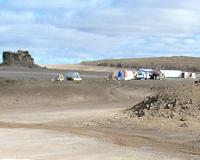 |
Washington DC (SPX) Aug 04, 2010 From the early days of experimental airplanes to NASA's soaring space shuttles, the evolution of flight has mirrored the evolution of society. The ongoing scientific discoveries that are part of aeronautics and space flight have improved life on Earth and allowed humans to begin investigating the secrets of the universe. "This Month in Exploration" presents the rich history of human flight, contextualizing where we've been and examining the exploration history NASA is making today.
100 Years Ago
85 Years Ago
75 Years Ago August 12, 1960: NASA launched its first communications satellite, the Echo 1, via a Thor- Delta rocket from Vandenberg Air Force Base. The satellite transmitted a radio message from President Dwight D. Eisenhower across the nation, demonstrating the feasibility of global radio communications via satellites. Echo 1 was the most visible and largest satellite launched at that time. Although the mission was successful, it was quickly superseded by active-repeater communications satellites such as Telstar.
45 Years Ago
35 Years Ago
25 Years Ago August 9, 2000: The European Space Agency launched the second pair of Cluster II mission satellites, named Rumba and Tango, aboard a Soyuz-Fregat rocket from Russia's Baikonur Cosmodrome. The Cluster mission used simultaneous measurements from four satellites to provide detailed analysis of the effects of solar wind on Earth's magnetic field. The mission is still in effect today and has resulted in around 1000 scientific publications in peer-reviewed journals.
5 Years Ago
Present Day August 22, 2010: Science fiction writer Ray Bradbury was born 100 years ago on this day in Waukegan, Ill. He wrote "The Martian Chronicles" published in 1949. Among his poems is one inspired by a trip to NASA's Kennedy Space Center, Fla. where he compared his tour of the Saturn hanger to "walking around inside Shakespeare's head."
Share This Article With Planet Earth
Related Links This Month in Exploration Main Space Tourism, Space Transport and Space Exploration News
 Wyle Scientist To Study Stress In Haughton-Mars Project Spaceflight Analog
Wyle Scientist To Study Stress In Haughton-Mars Project Spaceflight AnalogEl Segundo CA (SPX) Jul 30, 2010 A remote Canadian island is being used to simulate isolated space flight conditions for a NASA-funded medical research study that could produce important information to assist astronauts in potential long duration flights to Mars or an asteroid. The Haughton-Mars Project Research Station on Devon Island, well above the Arctic Circle, has many features of isolation and terrain that make it ... read more |
|
| The content herein, unless otherwise known to be public domain, are Copyright 1995-2010 - SpaceDaily. AFP and UPI Wire Stories are copyright Agence France-Presse and United Press International. ESA Portal Reports are copyright European Space Agency. All NASA sourced material is public domain. Additional copyrights may apply in whole or part to other bona fide parties. Advertising does not imply endorsement,agreement or approval of any opinions, statements or information provided by SpaceDaily on any Web page published or hosted by SpaceDaily. Privacy Statement |